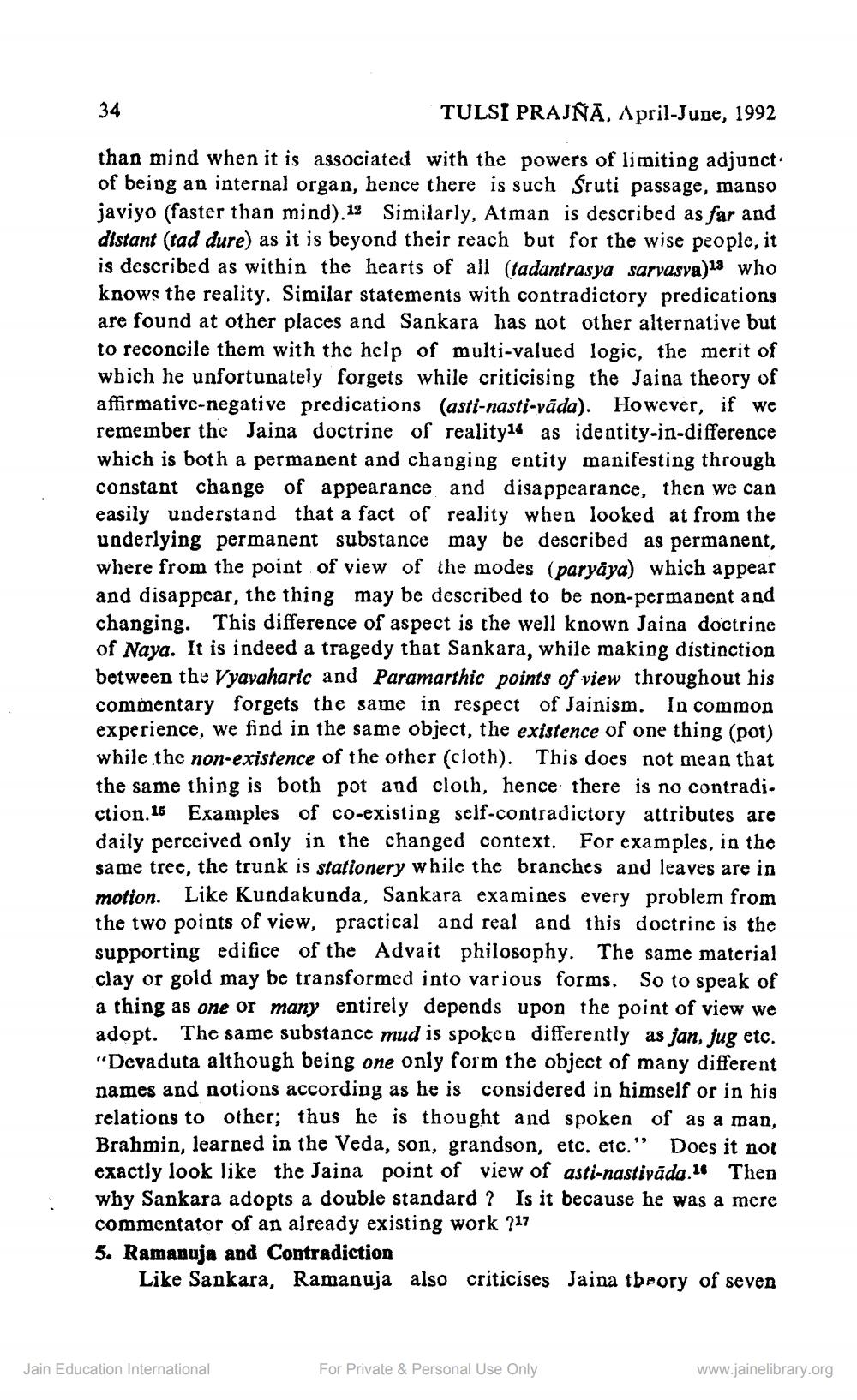________________
34
TULSI PRAJÑA. April-June, 1992
than mind when it is associated with the powers of limiting adjunct of being an internal organ, hence there is such Śruti passage, manso javiyo (faster than mind).12 Similarly, Atman is described as far and distant (tad dure) as it is beyond their reach but for the wise people, it is described as within the hearts of all (tadantrasya sarvasva)13 who knows the reality. Similar statements with contradictory predications are found at other places and Sankara has not other alternative but to reconcile them with the help of multi-valued logic, the merit of which he unfortunately forgets while criticising the Jaina theory of affirmative-negative predications (asti-nasti-vāda). However, if we remember the Jaina doctrine of reality14 as identity-in-difference which is both a permanent and changing entity manifesting through constant change of appearance and disappearance, then we can easily understand that a fact of reality when looked at from the underlying permanent substance may be described as permanent, where from the point of view of the modes (paryaya) which appear and disappear, the thing may be described to be non-permanent and changing. This difference of aspect is the well known Jaina doctrine of Naya. It is indeed a tragedy that Sankara, while making distinction between the Vyavaharic and Paramarthic points of view throughout his commentary forgets the same in respect of Jainism. In common experience, we find in the same object, the existence of one thing (pot) while the non-existence of the other (cloth). This does not mean that the same thing is both pot and cloth, hence there is no contradiction. 15 Examples of co-existing self-contradictory attributes are daily perceived only in the changed context. For examples, in the same tree, the trunk is stationery while the branches and leaves are in motion. Like Kundakunda, Sankara examines every problem from the two points of view, practical and real and this doctrine is the supporting edifice of the Advait philosophy. The same material clay or gold may be transformed into various forms. So to speak of a thing as one or many entirely depends upon the point of view we adopt. The same substance mud is spoken differently as jan, jug etc. "Devaduta although being one only form the object of many different names and notions according as he is considered in himself or in his relations to other; thus he is thought and spoken of as a man, Brahmin, learned in the Veda, son, grandson, etc. etc." Does it not exactly look like the Jaina point of view of asti-nastivada. Then why Sankara adopts a double standard? Is it because he was a mere commentator of an already existing work ?17
5. Ramanuja and Contradiction
Like Sankara, Ramanuja also criticises Jaina theory of seven
Jain Education International
For Private & Personal Use Only
www.jainelibrary.org




